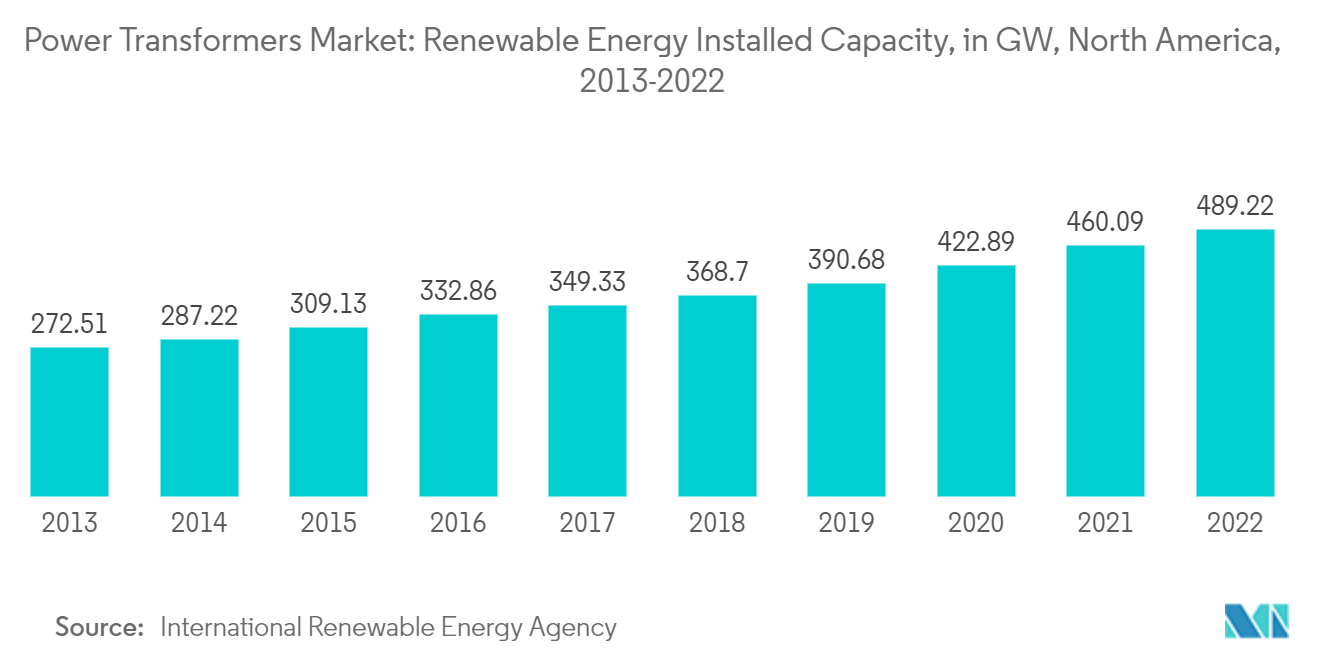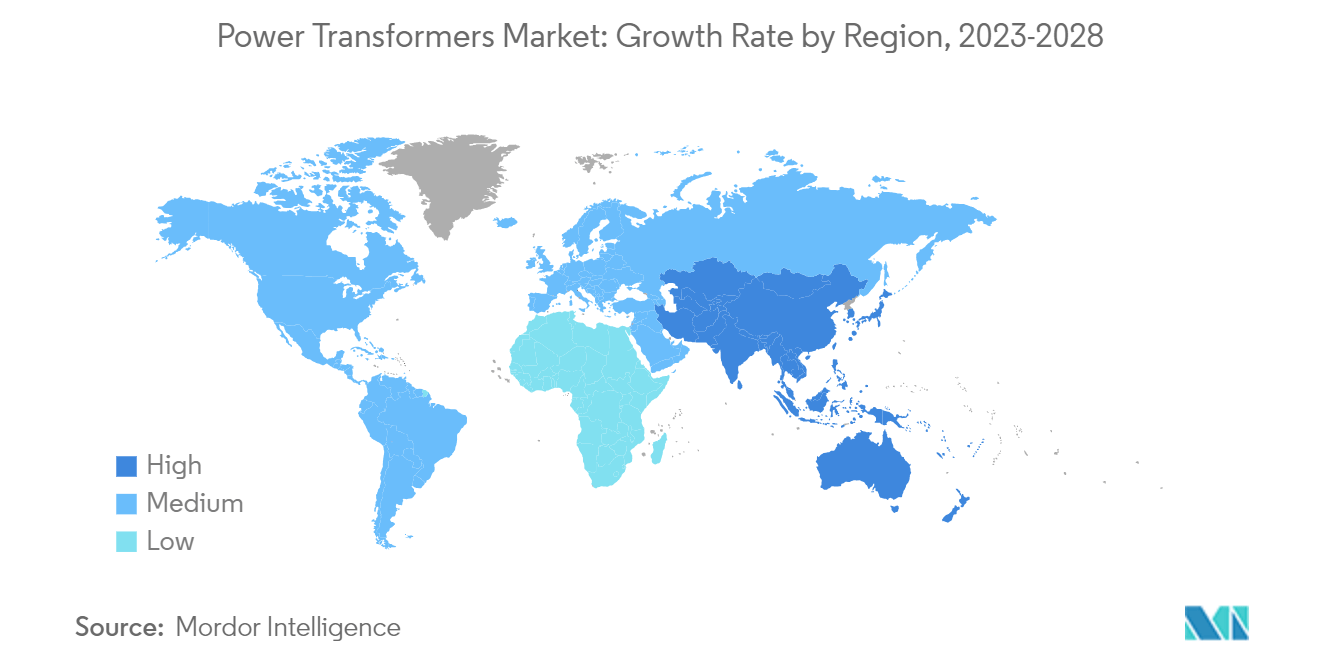Market Trends of Power Transformers Industry
Large Power Transformers Segment to Witness Significant Growth
- A large power transformer (LPT) is an electrical device used in power systems to transfer electrical energy between different voltage levels. It is a static device consisting of wire coils, called windings, wrapped around a core made of laminated steel.
- The primary purpose of large power transformers is that they are usually used as transmission transformers and generation step-up transformers. They allow efficient transmission of electrical energy over long distances by reducing power losses and optimizing voltage levels.
- Over the last decade, a new technology, high voltage direct current (HVDC), has become more popular for long distances and submarine environments. HVDC transmissions hold the potential to improve the power transmission landscape around the globe. This technology is at the forefront of the emerging smart grid revolution and has emerged as an economically viable solution for bulk and long-distance power transmission. The increasing penetration of HVDC technology all around the globe is expected to increase the demand for LPT during the forecast period.
- Further, the exponential increase in renewable energy installations has been a major driver for LPTs over the last decade. Most utility-scale renewable energy generation facilities, such as vast solar and wind farms, are generally located far from population centers. Hence, they should be connected to the demand centers via large-scale transmission projects to utilize the power generated. Several large renewable energy projects are currently under development and require large power transformers for transmissions.
- Due to the high penetration rate of renewable energy in the electricity generation sector, grid stability has become a significant issue in countries such as Canada and the United States, which have a high level of energy integration in their grids. This requires the modernization of older transmission and distribution infrastructure. As renewable energy produced from sources, such as solar and wind, provides variable power output, traditional transmission and distribution systems are not suitable for renewable energy transmission and distribution (T&D) and require upgradation or retrofitting with innovative grid technologies.
- North America is one of the largest renewable energy markets globally, and over the past decade, installed renewable energy capacity has grown from nearly 272.51 GW in 2013 to 489.22 GW in 2022, a growth of over 79.5%.
- Over the past four decades, North American countries like the United States and Canada have installed large transmission networks, and retrofitting these long-distance networks with new high-voltage technologies is the region's main priority. Further, most of the large power transformers in the regions were installed more than twenty years ago and require upgradation.
- Further, in November 2022, Transmission Developers Inc. began constructing the Champlain Hudson Power Express transmission line, delivering reliable, clean energy directly from Hydro-Québec in Canada to New York City. Once completed, the Champlain Hudson Power Express is expected to provide 1,250 MW of clean hydroelectricity to power over one million homes. The transmission line is scheduled to be fully operational by the spring of 2026. These projects are likely to boost the power transformer market in the country.
- Owing to the above points, the large power transformer segment is expected to account for the largest market share during the forecast period.

Asia-Pacific to Dominate the Market
- The Asia-Pacific region is the largest energy consumer globally. In 2022, according to the Energy Institute Statistical Review of World Energy 2023, the region generated nearly 14,546.4 TWh of electricity, accounting for nearly 49.8% of the global generation.
- The rising integration of renewable energy from massive utility-scale renewable energy farms in countries such as China and India, the electrification of industries and buildings, and the growth of data centers contribute to a significant increase in electricity consumption. With the growing population and urbanization in the region, the electricity demand is also expected to increase, driving the need for power transformers to handle higher voltages and power levels. Additionally, integrating renewable energy sources like wind and solar into the grid will require new transformers to control the variable and decentralized energy they produce.
- As the electricity demand across China has grown steadily, the country has invested heavily in its T&D infrastructure to satiate the burgeoning energy demand. For instance, in January 2023, the State Grid Corporation of China announced plans to invest nearly USD 77 billion in transmission infrastructure and energy storage systems during 2023, up by nearly 4.0% Y-o-Y.
- Further, India is witnessing massive infrastructure development in the energy, transportation, and real estate sectors. These projects require a robust electrical grid system, including power transformers, to support the growing energy demand and ensure reliable power supply to various infrastructural facilities. The Indian industrial sector is expanding rapidly, including manufacturing, construction, and mining. This growth demands a reliable and uninterrupted power supply, necessitating the deployment of power transformers to meet the energy needs of industrial facilities. For instance, in August 2022, Srex Power India secured a contract from Vivo Mobile India for building an EHV 220kV Gas Insulated substation at Vivo Mobile's Greater Noida Facility.
- In addition, the country's power grid has become older and needs modernization. With the increasing power load and the rising integration of variable generation assets such as solar panels and wind turbines, grid stability has become a significant issue. Hence, the government, including state and federal electric utilities, has been investing heavily in the upgradation and modernization of the grid.
- For instance, according to the Powergrid Corporation of India (PGCIL), the country's largest transmission utility, the country plans to invest USD 34.2 billion to set up an interstate transmission network (ISTS), primarily to accommodate and transmit renewable energy. According to the state utility, the plan envisions investments of up to USD 17 billion from 2026-2027. According to the Power Ministry, the country has already approved 23 ISTS projects for green energy evacuation at a total cost of USD 1.93 billion during FY 2022. In November 2022, transmission projects worth nearly USD 7.2 billion was approved.
- Owing to the above points and recent developments, Asia-Pacific is expected to witness significant growth in the power market during the forecast period.

